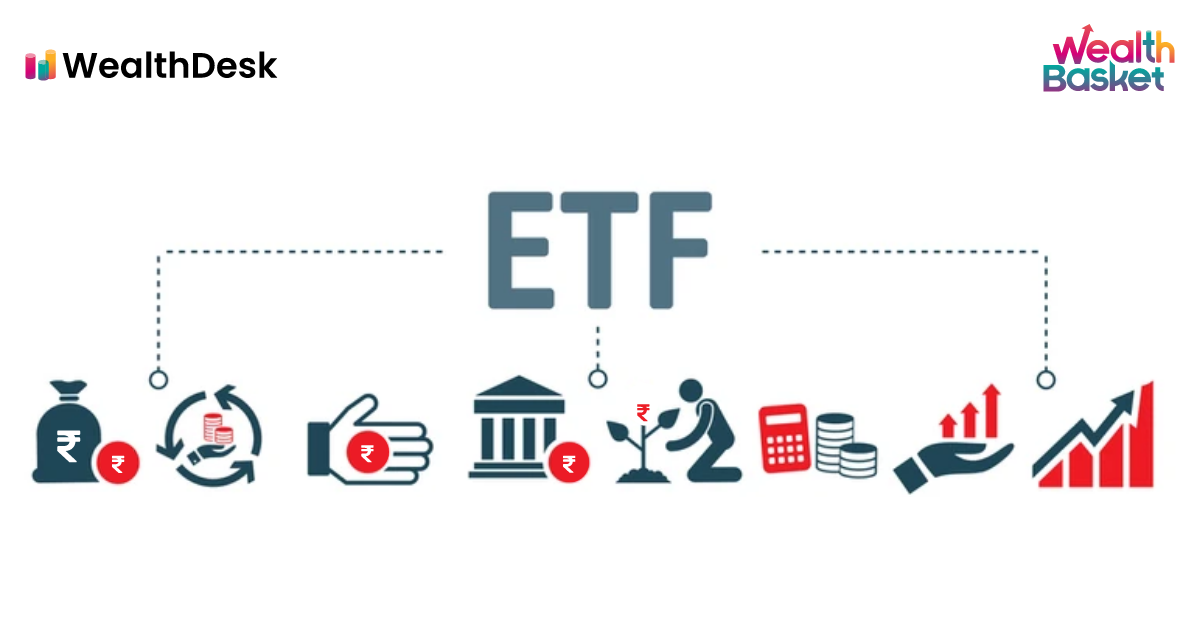Exchange-traded funds (ETFs) are funds that can be traded like a stock on the exchanges. ETFs can be actively or passively managed. Momentum ETFs are an example of actively managed ETFs, while index ETFs are an example of passively managed ETFs.
Due to the unique nature of ETFs, there are wide applications to ETFs. Here we learn about 8 of them.
Index investing with ETFs
Index investing involves investing to earn returns close to indexes like Nifty, SENSEX, Nifty Bank, Nifty IT, etc. Index investing would require a high amount of capital if you were to invest directly in the securities inside these indexes. So, most investors prefer index funds.
Index investments in India can be made easily using ETFs due to the wide range of index ETFs
SIPs with ETFs
Systematic Investment Plans (SIPs) allow investors to make fixed periodic investments in a security or fund. SIPs are known to lower the cost of investing through Rupee-cost averaging. SIP investments are preferred by investors who dislike searching for the right timing. Instead of finding the right timing when prices are low, you can follow a disciplined approach that will lower your overall investment costs.
SIPs in ETFs that follow the market or sectoral indexes are a good way to make diversified investments at lower costs without worrying about timing the market.
How to start SIPs in ETFs?
In India, SIPs in ETFs have to be set up by the investors themselves. Some brokers do allow investors to set up automatic SIPs. If your broker does not have the feature to set up SIPs for ETFs, you can always commit to a DIY SIP (Do-It-Yourself SIP).
Asset Allocation with ETFs
Asset allocation strategies assign portions of a portfolio to different asset categories like stocks, bonds, commodities and cash. This is done to lower the risk from any one asset. It also lowers the dependency on any one asset.
You can achieve asset allocation by making a portfolio of ETFs that follow indexes of different asset classes. ETF portfolios can be made with exposure to assets like stocks, bonds and commodities like gold and silver.
Suppose you prefer not to change the allocation to each asset class. In that case, you could build a Strategic Asset Allocation ETF portfolio.
Suppose you would like to take advantage of short term movements in the market while keeping long term goals in mind. In that case, you could build a Tactical Asset Allocation ETF portfolio.
Suppose you prefer a more active approach that shifts funds from worst performers to best performers. In that case, you could build a Dynamic Asset Allocation ETF portfolio.
You could also read: 3 Types of Asset Allocation Strategies
Swing Trading with ETFs
Swing traders will try to hold a security as long as it’s rising and short it as long as it is falling. The idea is to earn profits from all movements in price. Swing trading is a popular ETF trading strategy.
It should be noted that it is extremely difficult to predict when a stock or security will rise or fall. Hence, swing trading might not suit beginners.
On paper, swing trading in ETFs would be safer than swing trading with specific stocks. This is because ETFs are more diversified than stocks and thus, should have lower volatility.
Swing trading in leveraged ETFs has the possibility of higher gains due to the higher volatility, but they also have a higher risk.
Sector Rotation with ETFs
Sector rotation involves moving money from one industry to another. Economic growth happens in cycles. Periods of high growth are followed by periods of low growth. But, all industries do not grow at the same rate. By moving money to sectors that will grow most in the current stage of economic growth, investors can earn returns higher than the overall market.
Sector rotation with ETFs is way more hassle-free than sector rotation with direct investments in stocks. Using ETFs for sector rotation would be the best sector rotation strategy for beginners. They need not remember which sector each of their stocks belongs to, nor do they need to pick the stocks themselves.
Seasonal trends and ETFs
In each season, some industries do better than others. Investors can take advantage of seasonal market trends through sector index ETFs. For example, suppose a particular season is suitable for infrastructure industries. In that case, you may increase your holdings of infrastructure ETFs during that season.
One of India’s well-known seasonal market trends is gold prices and stock prices of electronics-related companies rising during Diwali.
Short selling with ETFs
Short selling is the opposite of buying a security, hoping that its price will fall. Here, you borrow the security and sell it in the open market. Later, when you buy the security for less money and give it back to the lender, you gain the difference in price for every unit shorted.
Short selling ETFs is a way to gain from a drop in their prices. If you expect a particular sector to do poorly, you can short sell the respective index ETFs.
Hedging with ETFs
When you buy a stock, you have a long position on it. You will take a long position when you expect the stock’s price to increase. The opposite of a long position would be taking a short position. Here you expect the stock’s price to fall. Hedging is taking a combination of these positions to reduce the risk.
A well-known ETF hedging strategy is to take short positions on index ETFs you own that you want to reduce the risk from.
In some markets, you can also find hedge fund ETFs that let retail investors access popular trading and investing strategies used by hedge funds.
Bottom Line
Exchange-traded funds (ETFs) have several applications. You could use them to earn the same returns as a market or a sector. Or you could employ asset allocation strategies or sector allocation strategies to build portfolios. They can also be used to short sell a market or a sector and hedge against the risk from an index fund.
On WealthDesk, there are WealthBaskets that use ETFs to employ various investment strategies. Each WealthBasket is a portfolio made and managed by SEBI registered professionals.
FAQs
Inverse ETFs bet against a particular index through derivatives. If you own a certain index fund, you can offset the risk by buying an inverse ETF that takes the short position on the same index.
ETFs have a wide range of applications, especially index ETFs. Index ETFs can be used to earn the same returns as a market or sector index, bet against a particular market or sector, or hedge the risk from index funds. You could also invest in actively managed ETFs that follow a specific strategy or have a specific goal like growth.
ETFs are great for beginners as well as seasoned investors. Beginners could invest in index ETFs or actively managed ETFs while experimenting and learning about investing. Seasoned investors may use them for short selling an index or hedging the risk from it.
Some equity ETFs may pay dividends. But, most equity ETFs reinvest the dividends.


















